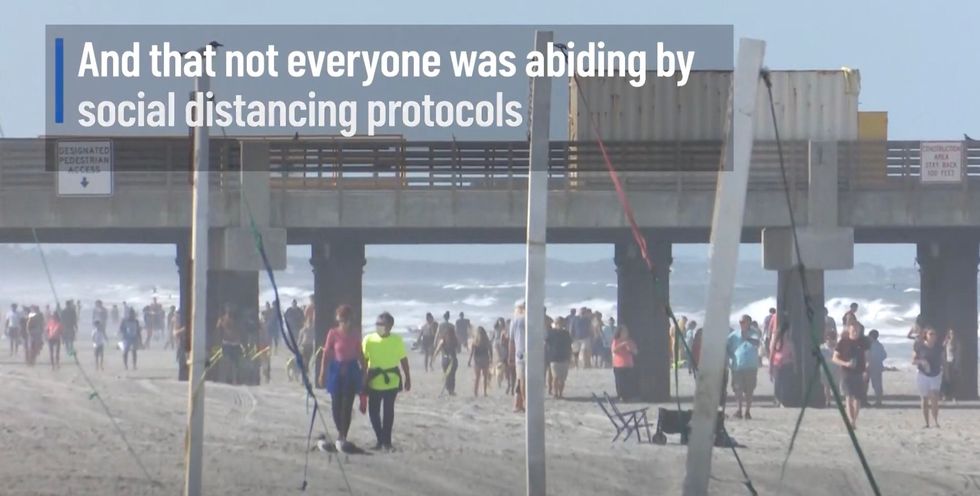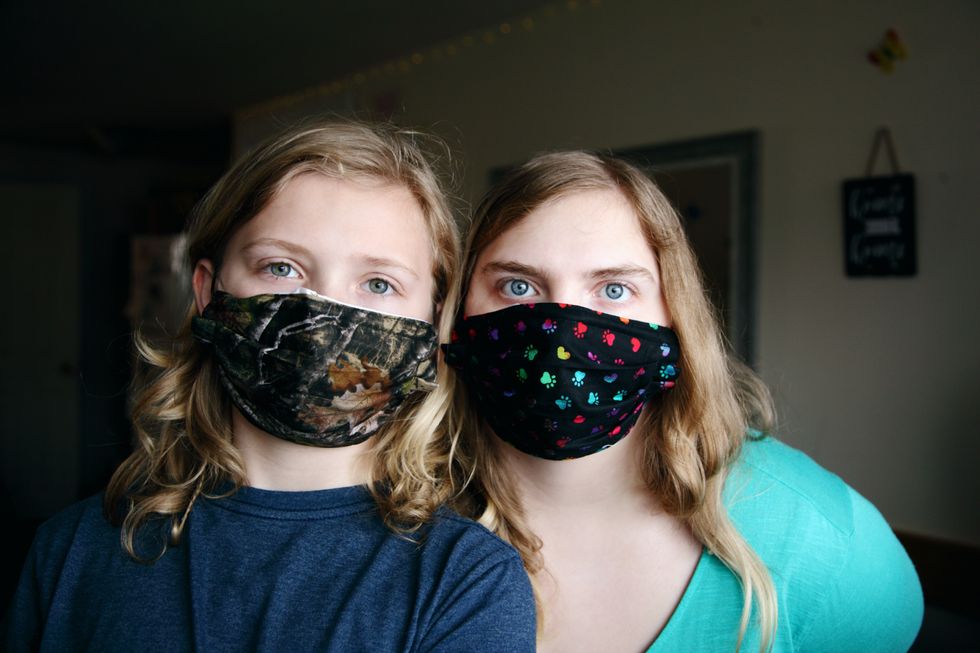Epidemiologists had warned that reopening, before containing the virus and before sufficient contact tracing, could lead to another outbreak… and it did.
The extremely large surge of new COVID-19 cases is being driven largely by the fact that America decided to open business and end the "quarantine" early. As of Wednesday, the United States has set new daily-case records FIVE TIMES in a matter of nine days. Most major spikes have been from states pushing to reopen early, despite the risk.

Florida has seen its new average daily cases increase more than tenfold since it began opening in early May. Cases in Arizona have jumped 858 percent. 858 PERCENT, since their reopening on May 8th. Cases in Texas have risen almost 680 percent since their opening May 1st. Most of our other states are not far behind, and this may mean another national lockdown, and we might not be able to get out of it this time.
Many people still flocking to the beach, businesses or hanging out without masks, are the main reason the spikes have been happening. About ⅓ of people out in public actually wear a mask, and that's scary.
"....a lot of people have begun acting as if the pandemic is over. I get that we're all sick of putting our lives on hold. But as the death toll continues to mount, it's too soon to abandon basic precautions." A reporter from Los Angeles Times explains. "We implemented safety precautions too late in the U.S., costing lives, and we've given up on them too soon, which will cost more. A new University of Washington model forecasts that the COVID-19 death toll could top 200,000 by October." Meanwhile, a new study — published last week by the Proceedings of the National Academy of Sciences — found that face coverings reduced the number of new infections in New York City by 66,000 between April 6 and May 9.
"We conclude that wearing of face masks in public corresponds to the most effective means to prevent inter-human transmission," said the report, "and this inexpensive practice, in conjunction with extensive testing, quarantine, and contact tracking, poses the most probable fighting opportunity to stop the COVID-19 pandemic, prior to the development of a vaccine."
Some places around the globe have immensely decreased their numbers over the extended quarantine time by simply taking precautions such as wearing masks, staying out of large crowds, and only going out when necessary. Also by strongly encouraging their citizens to regularly wash and sanitize their hands, these places have simply stopped major outbreaks from occurring.
These are only a few of the countries taking major leaps in the right direction in dealing with Corona. One I would like to take a closer look at is Canada, our fellow neighbor. Canada's attempts to fight the virus are far from perfect, but they're still doing better than the U.S. According to a recent study, the United States has two times the amount of daily-cases and 30 percent more deaths per capita than Canada. As of May 5, according to data from Johns Hopkins University, Canada has 61,954 confirmed cases with 4,003 deaths, out of a population of about 37 million. The US has 1,178, 906 cases with 68,689 deaths, out of a population 328 million. Both nations watched coronavirus spike at about the same time in mid-March. But Canada's caseload trajectory took a far gentler curve than that in the US.
Another big difference is that Canada continued to fund public-health groups before the coronavirus hit, while the US repeatedly cut funding to the Centers for Disease Control and Prevention (CDC). And unlike the US, Canada has a universal health care system. Professor Peter Berman, a public health expert at the University of British Columbia's medical school, told The NewYork Times that the way hospitals are run in the two countries is vital to understanding the difference in cases. In the US, hospitals are private. In Canada, the health system is based on fixed funding and it does not matter how many beds are used. This, he said: "allows the public health authorities to essentially commandeer the hospital system. It's a command and control thing, it's not a coordination thing."
So authorities in Canada could order hospitals to prepare. In the US, he said, no one could tell hospitals what to do. But, even worse than that, the system was designed to work against such orders.
"If you have a private hospital where all the beds are paid for by patients and by insurance, when you have an empty bed, you have no revenue. So there's a strong incentive for the hospital managers, especially in trying economic times, to be reluctant to cooperate," he said.
It was this model, he said, that led to hospitals panicking about not having enough beds or equipment.
Canada's response is far from perfect. One of its big problems is the high death rate in nursing homes. On April 17, The NewYork Times reported around half the people who were killed by the coronavirus — at that point 1,193 — were residents in nursing homes.
It takes 30 seconds for you to put on a mask if you go outside, But you're saving someone's life who's at risk. It takes 30 seconds to tell your friends you don't want to hangout, stopping a potential spread. We are all tired of quarantine, but it will take all of us to get it to end the right way. If you need to go in public make sure it's for necessary purposes and wear a mask! It's not that hard! Be safe and keep others around you safe.
- COVID-19 Isn't "Just The Common Flu", So Stop Spreading That Lie ›
- The Ultimate Coronavirus Guide For Dummies ›
- Stop Making Instagram Your Only Outlet For Social Activism ›
- Washing Your Hands Can Save Someone's Life ›
- What We Can ALL Do, To Help Prevent The Spread Of Corona ›












